#hebrew university of jerusalem
Explore tagged Tumblr posts
Text
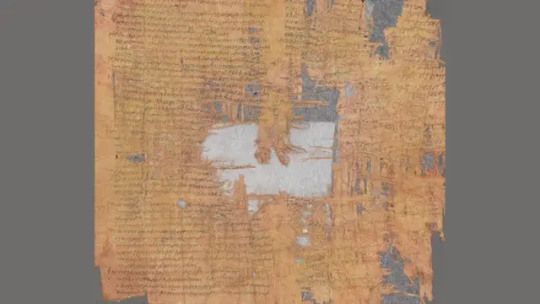
1,900-Year-Old Papyrus Records Roman Tax Fraud Trial
The Greek document details a court case in ancient Palestine involving tax fraud and provides insight into trial preparations in the Roman Empire
Back in 2014, a researcher from the Hebrew University of Jerusalem rediscovered an ancient papyrus while organizing a storeroom in the Israel Antiquities Authority’s Dead Sea Scrolls Unit. Once found in the Judean Desert, the document’s script had previously been classified as Nabataean—an ancient Aramaic language—but papyrus expert Hannah Cotton knew better.
“When I saw it marked ‘Nabataean,’ I exclaimed, ‘It’s Greek to me!’” the researcher says in a statement by the university.
Cotton and a team of experts spent the next decade deciphering the 133-line text, and their findings were recently published in the journal Tyche. Turns out, the document is the longest Greek papyrus ever found in the Judean Desert, and its newly translated content is particularly unique: a Roman lawyer’s detailed notes about the trial of two men accused of tax fraud.
“This is the best-documented Roman court case from Judaea, apart from the trial of Jesus,” says study coauthor Avner Ecker, a historian at the Hebrew University of Jerusalem, in the statement.
Per the study, the papyrus was likely written on the “eve of the Bar Kokhba Revolt,” a second-century Jewish uprising against Roman rule. The Roman Empire had colonized Judea—the southern part of ancient Palestine—some 200 years earlier. By 132 C.E., various Roman incursions upon Jewish life, including bans on religious practices, had taken their toll: The dwindling population of Jews in Palestine revolted. The rebellion, led by a man named Bar Kokhba, was crushed by the Romans in 135 C.E., and Jews were subsequently banned from Jerusalem.
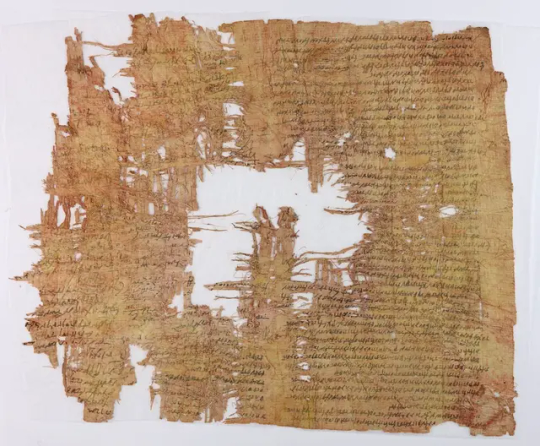
The newly translated papyrus was written after Roman Emperor Hadrian’s visit to Judea around 130 C.E. and before the Bar Kokhba Revolt, per the study. It details Rome’s case against two individuals—Gadalias and Saulos—accused of forging documentation about selling and freeing slaves to bypass paying Roman taxes.
“Forgery and tax fraud carried severe penalties under Roman law, including hard labor or even capital punishment,” says study coauthor Anna Dolganov, a papyrus expert at the Austrian Academy of Sciences, in the statement.
The papyrus was written in “vibrant and direct” language by a strategizing prosecutor, advising another lawyer about pieces of evidence and anticipating objections, per the statement. The document also contains a “rapidly drafted transcript of the judicial hearing itself.”
As Dolganov says in the statement, “This papyrus is extraordinary because it provides direct insight into trial preparations in this part of the Roman Empire.”
Significant portions of the document are missing, making conclusions about the trial’s participants difficult to draw. Still, the researchers write that the prosecutors were likely “functionaries of the Roman fiscal administration” and suggest the defendants were Jews. The papyrus also makes mention of “an informer who denounced the defendants to Roman authorities.”
As Live Science’s Kristina Killgrove writes, the papyrus sheds light on the long-debated question of whether or not ancient Jewish people owned slaves. The document mentions that Saulos’ family owns multiple slaves, but whether those enslaved people were Jewish is unclear.
The trial’s location and the case’s outcome also remain mysterious. Per the study, proceedings may have been interrupted by the Bar Kokhba Revolt. Somehow, this papyrus ended up among a collection of documents stored in caves in the Judean Desert—the Dead Sea Scrolls, which were rediscovered in the mid-20th century.
As study coauthor Fritz Mitthof, a historian at the University of Vienna, says in the statement, the papyrus showcases the Romans’ governmental reach: They regulated private transactions even in remote regions of their empire.
By Sonja Anderson.

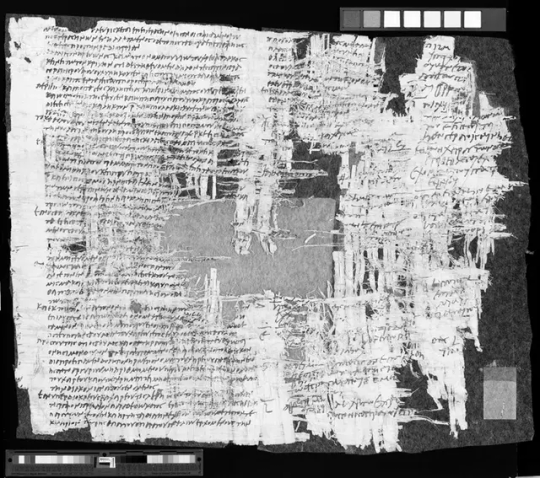
#1900-Year-Old Papyrus Records Roman Tax Fraud Trial#Hebrew University of Jerusalem#greek papyrus#Roman Emperor Hadrian#Bar Kokhba#Dead Sea Scrolls#ancient artifacts#archeology#archeolgst#history#history news#ancient history#ancient culture#ancient civilizations#roman history#roman empire#Ancient Greek#ancient israel
31 notes
·
View notes
Text

Crafting the perfect bite of meat: Engineers develop metamaterials that mimic muscle and fat architecture
In a new publication in Nature Communications, Israeli and Palestinian engineers from The Hebrew University of Jerusalem pioneered the use of metamaterials to create whole cuts of meat. The work leverages cutting-edge materials science to overcome the long-standing challenges of replicating the texture and structure of traditional meat while offering a scalable and cost-effective production method that surpasses 3D printing technology. Metamaterials are composite materials whose properties arise from their structure rather than their composition. By adopting principles typically used in the aerospace industry, the team, led by Dr. Mohammad Ghosheh and Prof. Yaakov Nahmias from Hebrew University, developed meat analogs that mimic the intricate architecture of muscle and fat. These analogs are produced using injection molding, a high-capacity manufacturing process borrowed from the polymer industry, marking the first time this technology has been applied to alternative meat production.
Read more.
#Materials Science#Science#Metamaterials#Food#Meat#Composites#Biomaterials#Injection molding#Hebrew University of Jerusalem
29 notes
·
View notes
Text
By Edward H. Kaplan and Evan Morris
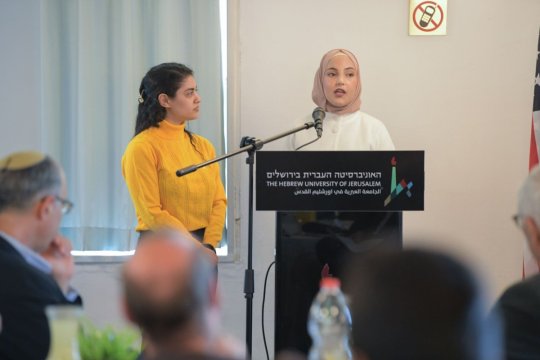
At Ben Gurion-Soroka Hospital, Technion-Rambam Hospital, and the Hebrew University-Hadassah Medical Center, we saw how integrated their medical schools and faculty are. The percentage of doctors, nurses, and pharmacists who are Arabs greatly exceeds their share in the total population.
We heard Arab university vice presidents, and their Jewish counterparts take full pride in jointly leading Israeli university life. Unlike the scene on American campuses, Muslim and Christian Arabs, Druze and Jewish students understand that their job is to learn, not to fight each other.
In presentations by an Israeli Arab journalist and a Druze professor, we learned that contrary to conceptions prevalent on American campuses, the majority of Israeli Arabs do not seek to separate from Israel. Indeed, while Israeli Arabs do have demands, we learned they are in service of more integration into Israeli society—better schools, law enforcement, and physical infrastructure—not less. Similarly, we learned from a Druze professor the strong connection to the Jewish State felt by the Israeli Druze.
We met face-to-face with faculty in academic disciplines matching our own at each of Ben Gurion University of the Negev, the Hebrew University of Jerusalem, the Technion-Israel Institute of Technology, the Weizmann Institute of Science, and Tel Aviv University. We also met with the leaders of Sapir College in Sderot which came under direct attack on October 7, and Tel Hai Academic College which is currently evacuated due to the Hezbollah threat from Lebanon.
The President of Israel's Academy of Sciences and Humanities and a Nobel Prize winner addressed the challenges facing Israeli academics in discussion with us. Facing such brilliance (and in such a small country), we were dismayed to learn the extent of academic discrimination being directed at Israeli academics: faculty who were invited to address conferences only to be told later��and in one case upon arrival in Australia—that they were no longer welcome to speak; external reviewers returning evaluation requests because they refuse to consider Israeli scholars; journals reneging on decisions to publish papers that were already accepted.
This is especially upsetting to us given the emergence of organized faculty extremists on American campuses with the publicly stated objective of boycotting Israeli academia. Our reaction to such prejudice is clear: we will build upon already existing collaborations with our Israeli colleagues, invite Israeli speakers to campus, offer to provide objective evaluations and reviews within our academic areas of expertise, and provide opportunities for budding young Israeli researchers.
40 notes
·
View notes
Text
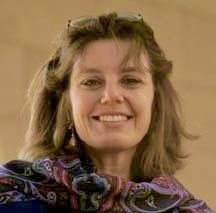
Paula Frederiksen a groundbreaking scholar in the field of Biblical History, in the age of the Tannaim, she held the position of William Goodwin Aurelio Professor of Scripture at Boston University from 1990 to 2010.Now emerita, she has been distinguished visiting professor in the Department of Comparative Religion at the Hebrew University of Jerusalem, since 2009. She is courageous and blazed trails against the status quo in her field, who at one time could have your career if you took too seriously the fact that Yeshua of Nazareth was a Jew.
#paula frederiksen#new testament#tannaim#biblical history#historical jesus#boston university#hebrew university of jerusalem
3 notes
·
View notes
Text
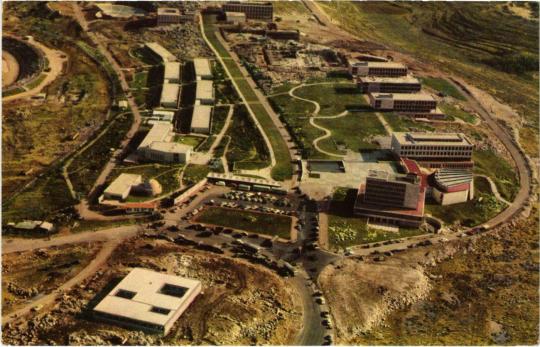
Hebrew University of Jerusalem, Israel
Israeli vintage postcard, mailed in 1960 to Paris
#university#israel#israeli#historic#photo#briefkaart#vintage#1960#hebrew university of jerusalem#jerusalem#sepia#photography#carte postale#paris#postcard#mailed#postkarte#postal#tarjeta#ansichtskarte#old#ephemera#postkaart#hebrew
11 notes
·
View notes
Text
A 3,800-Year-Old Red Textile Dyed with Biblical Scarlet Discovered in the Judean Desert Caves
A 3,800-Year-Old Red Textile Dyed with Biblical Scarlet Discovered in the Judean Desert Caves
In the caves of the Judean desert, the earliest evidence of red-dyed textile using scale insects was revealed. According to a new joint study of the Israel Antiquities Authority, Bar-Ilan University and the Hebrew University of Jerusalem, the color of the rare 3,800-year-old textile was produced from the oak scale insects, which the researchers identify with the biblical “Tola‛at Hashani”…
#archeologia#Bar-Ilan University#English news#Hebrew University of Jerusalem#Israel#Israel Antiquities Authority#notizie#scavi#scavi archeologici#scoperte#textile
2 notes
·
View notes
Text
youtube
the spielberg jewish film archive
0 notes
Text
All the little things.
“The researchers found that suppressing our unwanted thoughts could help us to reduce it happening from the point it was formed.”- scientists may have figured out how to control intrusive thoughts, science focus, 2022 Keep telling myself: I feel cooler, cooler 🧘♀️. Yah, 35 outside is nearly all year around. 🤪

View On WordPress
#cooler#dailyprompt#doctors#Hebrew University of Jerusalem#researchers#suppressive thoughts#thoughts
0 notes
Text
irritating dude in classics that wont translate anything at all: (45.5) >]] ¦¦¥>;¦] >;>€>;>>¥>; (<- imagine that's the greek i dont have a greek keyboard). this may be taken a number of ways,
me, frantically taking note of the citation and searching for the relevant translated paragraph: ?????? uuhhuh okay. waita minute.!
17 notes
·
View notes
Text

Call to Action: Support academic freedom for Nadera Shalhoub-Kevorkian
Hebrew University's suspension of Palestinian professor Nadera Shalhoub-Kevorkian sends a chilling message to scholars worldwide. Silencing her undermines academic freedom and the broader struggle for human rights and dignity in Palestine and beyond.
[link]
#free gaza#israel#gazaunderattack#israel is a terrorist state#gaza strip#gaza#free palestine#genocide#palestine#jerusalem#news#palestine news#rafah#tel aviv#lebanon#al quds#current events#yemen#west bank#hebrew university#human rights violations#humanitarian crisis#human rights#humanitarian aid#stop genocide#cultural genocide#this is genocide#end the genocide#genocide joe#joe biden
4 notes
·
View notes
Text
Israel Joins the Race for Quantum Supremacy with First Domestically Built Computer
Israel-IAI Unveil First Israeli Quantum Computer: Jerusalem, Israel – Israel has taken a significant step towards becoming a global leader in quantum computing technology with the unveiling of its first domestically built quantum computer. This milestone achievement, announced by a consortium consisting of the Israel Innovation Authority, Israel Aerospace Industries (IAI), and Hebrew University,…
#Hebrew University#IAI#Israel#Israel Aerospace Industries#Israel Innovation Authority#Quantum Computer#The Hebrew University of Jerusalem#Yissum
0 notes
Text
May 27, 2024 - Student protesters at the University of Manchester in the UK unfurl a 10 meter long banner stating clear demands to their University to cut ties with Israel's barbaric genocide:
1. Cut ties with BAE Systems 2. Cut ties with Tel Aviv & Hebrew University of Jerusalem 3. End unethical research 4. No displicinary action for protesters
#free palestine#palestine#manchester#uk#england#students#student protest#university#banner#bds#BAE systems#divest#video#2024#genocide#occupation#israel
3K notes
·
View notes
Text

Study shows how organic molecules impact gold nanoparticles' electrochemical properties
A new study shows how organic molecules greatly influence the redox potential of gold nanoparticles, with differences up to 71 mV. Using experiments and computer simulations, the study highlights the important role of capping agents in controlling the nanoparticles' electrochemical properties and also identifies how kinetic effects impact these interactions. These findings have practical uses in areas such as nanoparticle dispersion, monitoring ligand exchange, and advancements in fields such as catalysis, electronics, and drug delivery, showing the potential for customizing nanoparticle behavior for specific applications. The study, led by Prof. Daniel Mandler with Prof. Roi Baer and Dr. Hadassah Elgavi Sinai and a team at Hebrew University and published in the Journal of the American Chemical Society, reveals how organic molecules affect the behavior of tiny gold particles absorbed on surfaces.
Read more.
#Materials Science#Science#Organic materials#Gold#Nanoparticles#Nanotechnology#Electrochemistry#Hebrew University of Jerusalem
15 notes
·
View notes
Link
Two of Israel’s most famous inventions are the commercialized cherry tomato and drip irrigation, so it makes perfect sense that another tomato/water innovation would arise here.
This time around, scientists developed tomatoes that are not only drought-tolerant, but whose yield actually increases in extreme weather conditions.
In a study recently published in the journal PNAS, researchers from The Hebrew University of Jerusalem crossbred two types of tomato species – a wild tomato from the deserts of western Peru and the cultivated tomato – with the aim of identifying which regions of the genome affect agricultural traits such as yields.
In the course of their research, which included DNA sequencing and data analysis of 1,400 plants, they identified interactions between two regions of the tomato genome that lead to increased yield. The new tomatoes are prolific despite consuming less water.
“Studies of complex traits in plants, such as yield and resistance to drought conditions, have been based on significantly smaller populations of around 200 species,” explains doctoral student Shai Torgeman, who conducted the research with Prof. Dani Zamir.
“This makes it impossible to identify all the interactions (epistasis) between the genes, as well as their influence on important agricultural traits,” Torgeman said.
“In this study, we genetically crossed two different species of tomato, and proved that by use of larger population and a genetic map that includes thousands of markers, it is possible to identify areas in the genome that have interaction between them that increases the yield.”
Now, the new varieties are being cultivated with the aim of commercializing them on the food market.
50 notes
·
View notes
Text
The return of the hostages from Hamas captivity is of the utmost importance to Israel.
I thought it might be helpful for some of you to hear just a bit more about certain individuals that Israel is releasing in order for that to happen. The sacrifice being made.
A thread:
1) Mohammad Abu Warda, responsible for 2 bus bombings in the 90s which murdered 46 people.
He made it clear at his trial that he would never stop murdering until Israel was destroyed. He was given multiple life sentences.
Now he'll be freed.

2) Arafat Irfaiya. In 2019 he raped Ori Ansbacher, a 19-year old, and stabbed her to death. He was sentenced to life in prison, plus 20 years.
Now he'll be freed, and no doubt treated as a hero.

3) Zakaria Zubeidi, former Jenin commander of the Al-Aqsa Martyrs Brigade. Responsible for the 2002 terror attack in Beit Shean in which 6 were murdered. In 2019 he was charged with shooting attacks on civilian buses.
There will be widespread rejoincing in Jenin when he returns.

4) Bilal Abu Ghanem. In 2015 he and a fellow terrorist boarded a bus and began shooting and stabbing passengers. Three died, and dozens were wounded.
He received 3 consecutive life sentences.
Now he'll be freed. Here are two of the people in their 70s who he murdered.
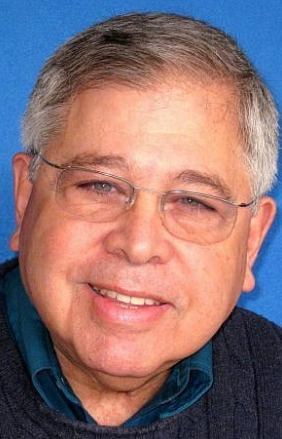
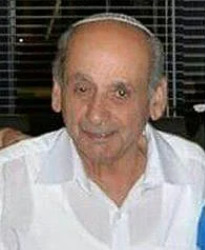
5) Wael Qassem and Wissam Abbasi, leaders of the Hamas-affiliated Silwan cell. Responsible for the carrying out of multiple bombings in the Second Intifada, which killed dozens (one of these bombings, at the Cafeteria at Hebrew University in 2002, pictured).
Now to be set free.

6) Ahmed Barghouti, relative & close associate of Marwan Barghouti.
Ahmed is responsible for a number of terror attacks, including a notorious mass-shooting in 2002 at a reception hall in Hadera (pictured) where people were celebrating a Bat Mitzvah.
Now to be freed.

7) Mahmoud Atallah. Given a life sentence for murdering a Palestinian woman who was accused of collaborating with Israel. More recently, manage to sexually assault and rape female prison guards.
Now to be freed.
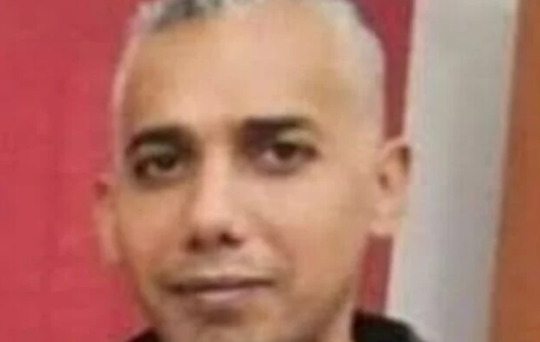
8) Ashraf Zughayer. Hamas leader accused of involvement in the 2002 bus bombing on Allenby Street in Tel Aviv, which killed 6 and injured dozens.
Now he'll go free.

9) Tabet Mardawi of Palestinian Islamic Jihad. Responsible for multiple terror attacks, including suicide bombings at stations in Binyamina (pictured) & Afula, a bombing at a bombing at a restaurant in Kiryat Motzkin (pictured).
Now he'll go free.


10) Nassim Zaatari. Received multiple life terms for his role in a 2003 terror attack when a suicide bomber detonated a five-kilogram device packed with ball bearings on a crowded bus in Jerusalem. 23 murdered, including 7 children.
Now he'll be free.
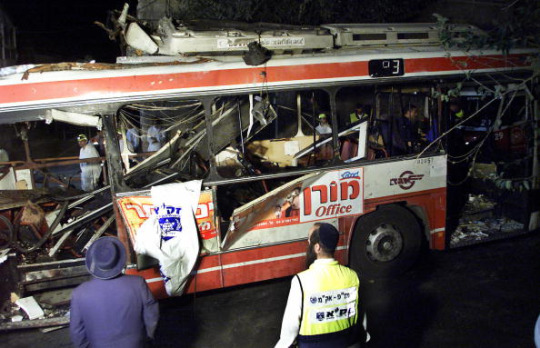
11) Ahmad Obeid, was sentenced to seven life terms for his role in sending out the suicide bomber responsible for the 2004 Café Hillel terror attack in Jerusalem.
Now he'll be free.

12) Leili Abu Ragila. Was serving life imprisonment for his role in the 2006 kidnap and murder of a high school student, Eliyahu Asheri (pictured).
Now he'll go free.

13) There are many more. Murderers. Terrorists. They will go free. They will be greeted as heroes when they do.
Israel is in an impossible situation. The hostages taken by Hamas *must* be freed. But a terrible price is being exacted for that to happen.
14) Jews around the world rejoice with the families of those who have been reunited with loved ones released by Hamas yesterday.
We also grieve with the families who are seeing those terrorists responsible for their loved ones' deaths walk free.
15) One more thought, if I may. You will see media outlets, certain commentators, even some politicians, trying to equate the hostages being released by Hamas with prisoners being released by Israel.
As the above thread shows, such a comparison is grotesque. Show them the truth.
16) I know this thread will not have been pleasant to read or see. I hope, however, that if you have read this far, you found it informative. Please do share it if you found it helpful.
*Thread ends*
@Daniel_Sugarman
143 notes
·
View notes
Text
Chapter 4: Executed Jews
By Dara Horn, excerpted from People Love Dead Jews
ALA ZUSKIN PERELMAN AND I HAD BEEN IN TOUCH ONLINE before I finally met her in person, and I still cannot quite believe she exists. Years ago, I wrote a novel about Marc Chagall and the Yiddish-language artists whom he once knew in Russia, all of whom were eventually murdered by the Soviet regime. While researching the novel, I found myself sucked into the bizarre story of these people's exploitation and destruction: how the Soviet Union first welcomed these artists as exemplars of universal human ideals, then used them for its own purposes, and finally executed them. I named my main character after the executed Yiddish actor Benjamin Zuskin, a comic performer known for playing fools. After the book came out, I heard from Ala in an email written in halting English: "I am Benjamin Zuskin's daughter." That winter I was speaking at a literary conference in Israel, where Ala lived, and she and I arranged to meet. It was like meeting a character from a book.
My hosts had generously put me up with other writers in a beautiful stone house in Jerusalem. We were there during Hanukkah, the celebration of Jewish independence. On the first night of the holiday, I walked to Jerusalem's Old City and watched as people lit enormous Hanukkah torches at the Western Wall. I thought of my home in New Jersey, where in school growing up I sang fake English Hanukkah songs created by American music education companies at school Christmas concerts, with lyrics describing Hanukkah as being about "joy and peace and love." Joy and peace and love describe Hanukkah, a commemoration of an underdog military victory over a powerful empire, about as well as they describe the Fourth of July. I remembered challenging a chorus teacher about one such song, and being told that I was a poor sport for disliking joy and peace and love. (Imagine a "Christmas song" with lyrics celebrating Christmas, the holiday of freedom. Doesn't everyone like freedom? What pedant would reject such a song?) I sang those words in front of hundreds of people to satisfy my neighbors that my tradition was universal — meaning, just like theirs. The night before meeting Ala, I walked back to the house through the dense stone streets of the Old City's Jewish Quarter, where every home had a glass case by its door, displaying the holiday's oil lamps. It was strange to see those hundreds of glowing lights. They were like a shining announcement that this night of celebration was shared by all these strangers around me, that it was universal. The experience was so unfamiliar that I didn't know what to make of it.
The next morning, Ala knocked on the door of the stone house and sat down in its living room, with its view of the Old City. She was a small dark-haired woman whose perfect posture showed a firmness that belied her age. She looked at me and said in Hebrew, "I feel as if you knew my father, like you understood what he went through. How did you know?"
The answer to that question goes back several thousand years.
~~~~~~~~~~~~~~~~~~~~~~~~
The teenage boys who participated in competitive athletics in the gymnasium in Jerusalem 2,200 years ago had their circumcisions reversed, because otherwise they wouldn't have been allowed to play. In the Hellenistic empire that had conquered Judea, sports were sacred, the entry point to being a person who mattered, the ultimate height of cool — and sports, of course, were always played in the nude. As one can imagine, ancient genital surgery of this nature was excruciating and potentially fatal. But the boys did not want to miss out.
I learned this fun fact in seventh grade, from a Hebrew school teacher who was instructing me and my pubescent classmates about the Hanukkah story — about how Hellenistic tyranny gained a foothold in ancient Judea with the help of Jews who wanted to fit in. This teacher seemed overly jazzed to talk about penises with a bunch of adolescents, and I suspected he'd made the whole thing up. At home, I decided to fact-check. I pulled a dusty old book off my parents' shelf, Volume One of Heinrich Graetz's opus History of the Jews.
In nineteenth-century academic prose, Graetz explained how the leaders of Judea demonstrated their loyalty to the occupying Hellenistic empire by building a gymnasium and recruiting teenage athletes — only to discover that "in uncovering their bodies they could immediately be recognized as Judeans. But were they to take part in the Olympian games, and expose themselves to the mockery of Greek scoffers? Even this difficulty they evaded by undergoing a painful operation, so as to disguise the fact that they were Judeans." Their Zeus-worshipping overlords were not fooled. Within a few years, the regime outlawed not only circumcision but all of Jewish religious practice, and put to death anyone who didn't comply.
Sometime after that, the Maccabees showed up. That's the part of the story we usually hear.
Those ancient Jewish teenagers were on my mind that Hanukkah when Ala came to tell me about her father's terrifying life, because I sensed that something profound united them — something that doesn't match what we're usually taught about what bigotry looks or feels like. It doesn't involve "intolerance" or "persecution," at least not at first. Instead, it looks like the Jews themselves are choosing to reject their own traditions. It is a form of weaponized shame.
Two distinct patterns of antisemitism can be identified by the Jewish holidays that celebrate triumphs over them: Purim and Hanukkah. In the Purim version of antisemitism, exemplified by the Persian genocidal decrees in the biblical Book of Esther, the goal is openly stated and unambiguous: Kill all the Jews. In the Hanukkah version of antisemitism, whose appearances range from the Spanish Inquisition to the Soviet regime, the goal is still to eliminate Jewish civilization. But in the Hanukkah version, this goal could theoretically be accomplished simply by destroying Jewish civilization, while leaving the warm, de-Jewed bodies of its former practitioners intact.
For this reason, the Hanukkah version of antisemitism often employs Jews as its agents. It requires not dead Jews but cool Jews: those willing to give up whatever specific aspect of Jewish civilization is currently uncool. Of course, Judaism has always been uncool, going back to its origins as the planet's only monotheism, featuring a bossy and unsexy invisible God. Uncoolness is pretty much Judaism's brand, which is why cool people find it so threatening — and why Jews who are willing to become cool are absolutely necessary to Hanukkah antisemitism's success. These "converted" Jews are used to demonstrate the good intentions of the regime — which of course isn't antisemitic but merely requires that its Jews publicly flush thousands of years of Jewish civilization down the toilet in exchange for the worthy prize of not being treated like dirt, or not being murdered. For a few years. Maybe.
I wish I could tell the story of Ala's father concisely, compellingly, the way everyone prefers to hear about dead Jews. I regret to say that Benjamin Zuskin wasn't minding his own business and then randomly stuffed into a gas chamber, that his thirteen-year-old daughter did not sit in a closet writing an uplifting diary about the inherent goodness of humanity, that he did not leave behind sad-but-beautiful aphorisms pondering the absence of God while conveniently letting his fellow humans off the hook. He didn't even get crucified for his beliefs. Instead, he and his fellow Soviet Jewish artists — extraordinarily intelligent, creative, talented, and empathetic adults — were played for fools, falling into a slow-motion psychological horror story brimming with suspense and twisted self-blame. They were lured into a long game of appeasing and accommodating, giving up one inch after another of who they were in order to win that grand prize of being allowed to live.
Spoiler alert: they lost.
~~~~~~~~~~~~~~~~~~~~~~~~
I was in graduate school studying Yiddish literature, itself a rich vein of discussion about such impossible choices, when I became interested in Soviet Jewish artists like Ala's father. As I dug through library collections of early-twentieth-century Yiddish works, I came across a startling number of poetry books illustrated by Marc Chagall. I wondered if Chagall had known these Yiddish writers whose works he illustrated, and it turned out that he had. One of Chagall's first jobs as a young man was as an art teacher at a Jewish orphanage near Moscow, built for children orphaned by Russia's 1919-1920 civil war pogroms. This orphanage had a rather renowned faculty, populated by famous Yiddish writers who trained these traumatized children in the healing art of creativity.
It all sounded very lovely, until I noticed something else. That Chagall's art did not rely on a Jewish language — that it had, to use that insidious phrase, "universal appeal" — allowed him a chance to succeed as an artist in the West. The rest of the faculty, like Chagall, had also spent years in western Europe before the Russian revolution, but they chose to return to Russia because of the Soviet Union's policy of endorsing Yiddish as a "national Soviet language." In the 1920s and 30s, the USSR offered unprecedented material support to Yiddish culture, paying for Yiddish-language schools, theaters, publishing houses, and more, to the extent that there were Yiddish literary critics who were salaried by the Soviet government. This support led the major Yiddish novelist Dovid Bergelson to publish his landmark 1926 essay "Three Centers," about New York, Warsaw, and Moscow as centers of Yiddish-speaking culture, asking which city offered Yiddish writers the brightest prospects. His unequivocal answer was Moscow, a choice that brought him back to Russia the following year, where many other Jewish artists joined him.
But Soviet support for Jewish culture was part of a larger plan to brainwash and coerce national minorities into submitting to the Soviet regime — and for Jews, it came at a very specific price. From the beginning, the regime eliminated anything that celebrated Jewish "nationality" that didn't suit its needs. Jews were awesome, provided they weren't practicing Jewish religion, studying traditional Jewish texts, using Hebrew, or supporting Zionism. The Soviet Union thus pioneered a versatile gaslighting slogan, which it later spread through its client states in the developing world and which remains popular today: it was not antisemitic, merely anti-Zionist. (In the process of not being antisemitic and merely being anti-Zionist, the regime managed to persecute, imprison, torture, and murder thousands of Jews.) What's left of Jewish culture once you surgically remove religious practice, traditional texts, Hebrew, and Zionism? In the Soviet Empire, one answer was Yiddish, but Yiddish was also suspect for its supposedly backwards elements. Nearly 15 percent of its words came directly from biblical and rabbinic Hebrew, so Soviet Yiddish schools and publishers, under the guise of "simplifying" spelling, implemented a new and quite literally antisemitic spelling system that eliminated those words' Near Eastern roots. Another answer was "folklore" — music, visual art, theater, and other creative work reflecting Jewish life — but of course most of that cultural material was also deeply rooted in biblical and rabbinic sources, or reflected common religious practices like Jewish holidays and customs, so that was treacherous too.
No, what the regime required were Yiddish stories that showed how horrible traditional Jewish practice was, stories in which happy, enlightened Yiddish-speaking heroes rejected both religion and Zionism (which, aside from its modern political form, is also a fundamental feature of ancient Jewish texts and prayers traditionally recited at least three times daily). This de-Jewing process is clear from the repertoire of the government-sponsored Moscow State Yiddish Theater, which could only present or adapt Yiddish plays that denounced traditional Judaism as backward, bourgeois, corrupt, or even more explicitly — as in the many productions involving ghosts or graveyard scenes — as dead. As its actors would be, soon enough.
The Soviet Union's destruction of Jewish culture commenced, in a calculated move, with Jews positioned as the destroyers. It began with the Yevsektsiya, committees of Jewish Bolsheviks whose paid government jobs from 1918 through 1930 were to persecute, imprison, and occasionally murder Jews who participated in religious or Zionist institutions — categories that included everything from synagogues to sports clubs, all of which were shut down and their leaders either exiled or "purged." This went on, of course, until the regime purged the Yevsektsiya members themselves.
The pattern repeated in the 1940s. As sordid as the Yeveksiya chapter was, I found myself more intrigued by the undoing of the Jewish Antifascist Committee, a board of prominent Soviet Jewish artists and intellectuals established by Joseph Stalin in 1942 to drum up financial support from Jews overseas for the Soviet war effort. Two of the more prominent names on the JAC's roster of talent were Solomon Mikhoels, the director of the Moscow State Yiddish Theater, and Ala's father Benjamin Zuskin, the theater's leading actor. After promoting these people during the war, Stalin decided these loyal Soviet Jews were no longer useful, and charged them all with treason. He had decided that this committee he himself created was in fact a secret Zionist cabal, designed to bring down the Soviet state. Mikhoels was murdered first, in a 1948 hit staged to look like a traffic accident. Nearly all the others — Zuskin and twelve more Jewish luminaries, including the novelist Dovid Bergelson, who had proclaimed Moscow as the center of the Yiddish future — were executed by firing squad on August 1952.
Just as the regime accused these Jewish artists and intellectuals of being too "nationalist" (read: Jewish), today's long hindsight makes it strangely tempting to read this history and accuse them of not being "nationalist" enough — that is, of being so foolishly committed to the Soviet regime that they were unable to see the writing on the wall. Many works on this subject have said as much. In Stalin's Secret Pogrom, the indispensable English translation of transcripts from the JAC "trial," Russia scholar Joshua Rubenstein concludes his lengthy introduction with the following:
As for the defendants at the trial, it is not clear what they believed about the system they each served. Their lives darkly embodied the tragedy of Soviet Jewry. A combination of revolutionary commitment and naive idealism had tied them to a system they could not renounce. Whatever doubts or misgivings they had, they kept to themselves, and served the Kremlin with the required enthusiasm. They were not dissidents. They were Jewish martyrs. They were also Soviet patriots. Stalin repaid their loyalty by destroying them.
This is completely true, and also completely unfair. The tragedy — even the term seems unjust, with its implied blaming of the victim — was not that these Soviet Jews sold their souls to the devil, though many clearly did. The tragedy was that integrity was never an option in the first place.
~~~~~~~~~~~~~~~~~~~~~~~~
Ala was almost thirteen years old when her father was arrested and until that moment she was immersed in the Soviet Yiddish artistic scene. Her mother was also an actor in the Moscow State Yiddish Theater; her family lived in the same building as the murdered theater director Solomon Mikhoels, and moved in the same circles as other Jewish actors and writers. After seeing her parents perform countless times, Ala had a front-row seat to the destruction of their world. She attended Mikhoel's state funeral, heard about the arrest of the brilliant Yiddish author Der Nister from an actor friend who witnessed it from her apartment across the hall, and was present when secret police ransacked her home in conjunction with her father's arrest. In her biography, The Travels of Benjamin Zuskin, she provides for her readers what she gave me that morning in Jerusalem: an emotional recounting, with the benefit of hindsight, of what it was really like to live through the Soviet Jewish nightmare.
It's as close as we can get, anyway. Her father Benjamin Zuskin's own thoughts on the topic are available only from state interrogations extracted under unknown tortures. (One typical interrogation document from his three and a half years in the notorious Lubyanka Prison announces that the day's interrogation lasted four hours, but the transcript is only half a page long — leaving to the imagination how the interrogator and interrogatee may have spent their time together. Suffice it to say that another JAC detainee didn't make it to trial alive.) His years in prison began when he was arrested in December of 1948 in a Moscow hospital room, where he was being treated for chronic insomnia brought on by the murder of his boss and career-long acting partner, Mikhoels; the secret police strapped him to a gurney and carted him to prison in his hospital gown while he was still sedated.
But in order to truly appreciate the loss here, one needs to know what was lost — to return to the world of the great Yiddish writer Sholem Aleichem, the author of Benjamin Zuskin's first role on the Yiddish stage, in a play fittingly titled It's a Lie!
Benjamin Zuskin's path to the Yiddish theater and later to the Soviet firing squad began in a shtetl comparable to those immortalized in Sholem Aleichem's work. Zuskin, a child from a traditional family who was exposed to theater only through traveling Yiddish troupes and clowning relatives, experienced that world's destruction: his native Lithuanian shtetl, Ponievezh, was among the many Jewish towns forcibly evacuated during the First World War, catapulting him and hundreds of thousands of other Jewish refugees into modernity. He landed in Penza, a city with professional Russian theater and Yiddish amateur troupes. In 1920, the Moscow State Yiddish Theater opened, and by 1921, Zuskin was starring alongside Mikhoels, the theater's leading light.
In the one acting class I have ever attended, I learned only one thing: acting isn't about pretending to be someone you aren't, but rather about emotional communication. Zuskin, who not only starred in most productions but also taught in the theater's acting school, embodied the concept. His very first audition was a one-man sketch he created, consisting of nothing more than a bumbling old tailor threading a needle — without words, costumes, or props. It became so popular that he performed it to entranced crowds for years. This physical artistry animated his every role. As one critic wrote, "Even the slightest breeze and he is already air-bound."
Zuskin specialized in playing figures like the Fool in King Lear — as his daughter puts it in her book, characters who "are supposed to make you laugh, but they have an additional dimension, and they arouse poignant reflections about the cruelty of the world." Discussing his favorite roles, Zuskin once explained that "my heart is captivated particularly by the image of the person who is derided and humiliated, but who loves life, even though he encounters obstacles placed before him through no fault of his own."
The first half of Ala's book seems to recount only triumphs. The theater's repertoire in its early years was largely adopted from classic Yiddish writers like Sholem Aleichem, I. L. Peretz, and Mendele Moykher Seforim. The book's title is drawn from Zuskin's most famous role: Senderl, the Sancho Panza figure in Mendele's Don Quixote-inspired work, Travels of Benjamin the Third, about a pair of shtetl idiots who set out for the Land of Israel and wind up walking around the block. These productions were artistically inventive, brilliantly acted, and played to packed houses both at home and on tour. Travels of Benjamin the Third, in a 1928 review typical of the play's reception, was lauded by the New York Times as "one of the most originally conceived and beautifully executed evenings in the modern theater."
One of the theater's landmark productions, I. L. Peretz's surrealist masterpiece At Night in the Old Marketplace, was first performed in 1925. The play, set in a graveyard, is a kind of carnival for the graveyard's gathered ghosts. Those who come back from the dead are misfits like drunks and prostitutes, and also specific figures from shtetl life - yeshiva idlers, synagogue beadles, and the like. Leading them all is a badkhn, or wedding jester — divided in this production into two mirror-characters played by Mikhoels and Zuskin — whose repeated chorus among the living corpses is "The dead will rise!" "Within this play there was something hidden, something with an ungraspable depth," Ala writes, and then relates how after a performance in Vienna, one theatergoer came backstage to tell the director that "the play had shaken him as something that went beyond all imagination." The theatergoer was Sigmund Freud.
As Ala traces the theater's trajectory toward doom, it becomes obvious why this performance so affected Freud. The production was a zombie story about the horrifying possibility of something supposedly dead (here, Jewish civilization) coming back to life. The play was written a generation earlier as a Romantic work, but in the Moscow production, it became a means of denigrating traditional Jewish life without mourning it. That fantasy of a culture's death as something compelling and even desirable is not merely reminiscent of Freud's death drive, but also reveals the self-destructive bargain implicit in the entire Soviet-sponsored Jewish enterprise. In her book, Ala beautifully captures this tension as she explains the badkhn's role: "He sends a double message: he denies the very existence of the vanishing shadow world, and simultaneously he mocks it, as if it really does exist."
This double message was at the heart of Benjamin Zuskin's work as a comic Soviet Yiddish actor, a position that required him to mock the traditional Jewish life he came from while also pretending that his art could exist without it. "The chance to make fun of the shtetl which has become a thing of the past charmed me," he claimed early on, but later, according to his daughter, he began to privately express misgivings. The theater's decision to stage King Lear as a way of elevating itself disturbed him, suggesting as it did that the Yiddish repertoire was inferior. His own integrity came from his deep devotion to yiddishkayt, a sense of essential and enduring Jewishness, no matter how stripped-down that identity had become. "With the sharp sense of belonging to everything Jewish, he was tormented by the theater forsaking its expression of this belonging," his daughter writes. Even so, "no, he could not allow himself to oppose the Soviet regime even in his thoughts, the regime that gave him his own theater, but 'the heart and the wit do not meet.'"
In Ala's memory, her father differed from his director, partner, and occasional rival, Mikhoels, in his complete disinterest in politics. Mikhoels was a public figure as well as performer, and his leadership of the Jewish Antifascist Committee, while no more voluntary than any public act in a totalitarian state, was a role he played with gusto, traveling to America in 1943 and speaking to thousands of American Jews to raise money for the Red Army in their battle against the Nazis. Zuskin, on the other hand, was on the JAC roster, but seems to have continued playing the fool. According to both his daughter and his trial testimony, his role in the JAC was almost identical to his role on a Moscow municipal council, limited to playing chess in the back of the room during meetings.
In Jerusalem, Ala told me that her father was "a pure soul." "He had no interest in politics, only in his art," she said, describing his acting style as both classic and contemporary, praised by critics for its timeless qualities that are still evident today in his film work. But his talent was the most nuanced and sophisticated thing about him. Offstage, he was, as she put it in Hebrew, a "tam" — a biblical term sometimes translated as fool or simpleton, but which really means an innocent. (It is the first adjective used to describe the title character in the Book of Job.) It is true that in trial transcripts, Zuskin comes out looking better than many of his co-defendants by playing dumb instead of pointing fingers. But was this ignorance, or a wise acceptance of the futility of trying to save his skin? As King Lear's Fool put it, "They'll have me whipp'd for speaking true; thou'lt have me whipp'd for holding my peace." Reflecting on her father's role as a fool named Pinia in a popular film, Ala writes in her book, "When I imagine the moment when my father heard his death sentence, I see Pinia in close-up . . . his shoulders slumped, despair in his appearance. I hear the tone that cannot be imitated in his last line in the film — and perhaps also the last line in his life? — 'I don't understand anything.'"
Yet it is clear that Zuskin deeply understood how impossible his situation was. In one of the book's more disturbing moments, Ala describes him rehearsing for one of his landmark roles, that of the comic actor Hotsmakh in Sholem Aleichem's Wandering Stars, a work whose subject is the Yiddish theater. He had played the role before, but this production was going up in the wake of Mikhoel's murder. Zuskin was already among the hunted, and he knew it. As Ala writes:
One morning — already after the murder of Mikhoels — I saw my father pacing the room and memorizing the words of Hotsmakh's role. Suddenly, in a gesture revealing a hopeless anguish, Father actually threw himself at me, hugged me, pressed me to his heart, and together with me, continued to pace the room and to memorize the words of the role. That evening I saw the performance . . . "The doctors say that I need rest, air, and the sea . . . For what . . . without the theater?" [Hotsmakh asks], he winds the scarf around his neck — as though it were a noose. For my father, I think those words of Hotsmakh were like the motif of the role and — I think — of his own life.
~~~~~~~~~~~~~~~~~~~~~~~~
Describing the charges levied against Zuskin and his peers is a degrading exercise, for doing so makes it seem as though these charges are worth considering. They are not. It is at this point that Hanukkah antisemitism transformed, as it inevitably does, into Purim antisemitism. Here Ala offers what hundreds of pages of state archives can't, describing the impending horror of the noose around one's neck.
Her father stopped sleeping, began receiving anonymous threats, and saw that he was being watched. No conversation was safe. When a visitor from Poland waited near his apartment building to give him news of his older daughter Tamara (who was then living in Warsaw), Zuskin instructed the man to walk behind him while speaking to him and then to switch directions, so as to avoid notice. When the man asked Zuskin what he wanted to tell his daughter, Zuskin "approached the guest so closely that there was no space between them, and whispered in Yiddish, 'Tell her that the ground is burning beneath my feet.'" It is true that no one can know what Zuskin or any of the other defendants really believed about the Soviet system they served. It is also true — and far more devastating — that their beliefs were utterly irrelevant.
Ala and her mother were exiled to Kazakhstan after her father's arrest, and learned of his execution only when they were allowed to return to Moscow in 1955. By then, he had already been dead for three years.
In Jerusalem that morning, Ala told me, in a sudden private moment of anger and candor, that the Soviet Union's treatment of the Jews was worse than Nazi Germany's. I tried to argue, but she shut me up. Obviously the Nazi atrocities against Jews were incomparable, a fact Ala later acknowledged in a calmer mood. But over four generations, the Soviet regime forced Jews to participate in and internalize their own humiliation - and in that way, Ala suggested, they destroyed far more souls. And they never, ever, paid for it.
"They never had a Nuremberg," Ala told me that day, with a quiet fury. "They never acknowledged the evil of what they did. The Nazis were open about what they were doing, but the Soviets pretended. They lured the Jews in, they baited them with support and recognition, they used them, they tricked them, and then they killed them. It was a trap. And no one knows about it, even now. People know about the Holocaust, but not this. Even here in Israel, people don't know. How did you know?"
~~~~~~~~~~~~~~~~~~~~~~~~
That evening I went out to the Old City again, to watch the torches being lit at the Western Wall for the second night of Hanukkah. I walked once more through the Jewish Quarter, where the oil lamps, now each bearing one additional flame, were displayed outside every home, following the tradition to publicize the Hanukkah miracle — not merely the legendary long-lasting oil, but the miracle of military and spiritual victory over a coercive empire, the freedom to be uncool, the freedom not to pretend. Somewhere nearby, deep underground, lay the ruins of the gymnasium where de-circumcised Jewish boys once performed naked before approving crowds, stripped of their integrity and left with their private pain. I thought of Benjamin Zuskin performing as the dead wedding jester, proclaiming, "The dead will rise!" and then performing again in a "superior" play, as King Lear's Fool. I thought of the ground burning beneath his feet. I thought of his daughter, Ala, now an old woman, walking through Jerusalem.
I am not a sentimental person. As I returned to the stone house that night, along the streets lit by oil lamps, I was surprised to find myself crying.
#People Love Dead Jews#Dara Horn#Soviet Jewry#Soviet antisemitism#antizionism is not antisemitism#jumblr
346 notes
·
View notes